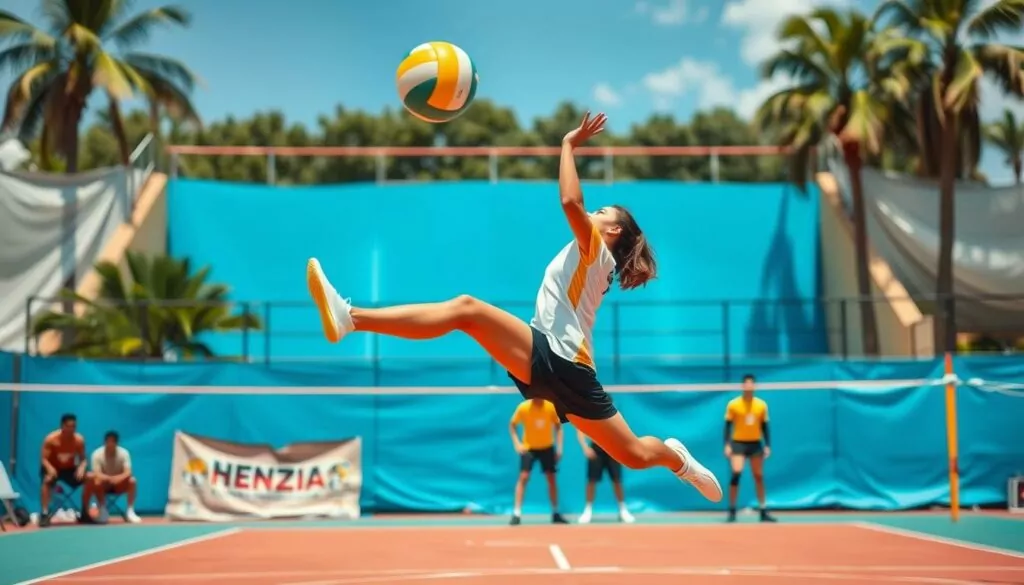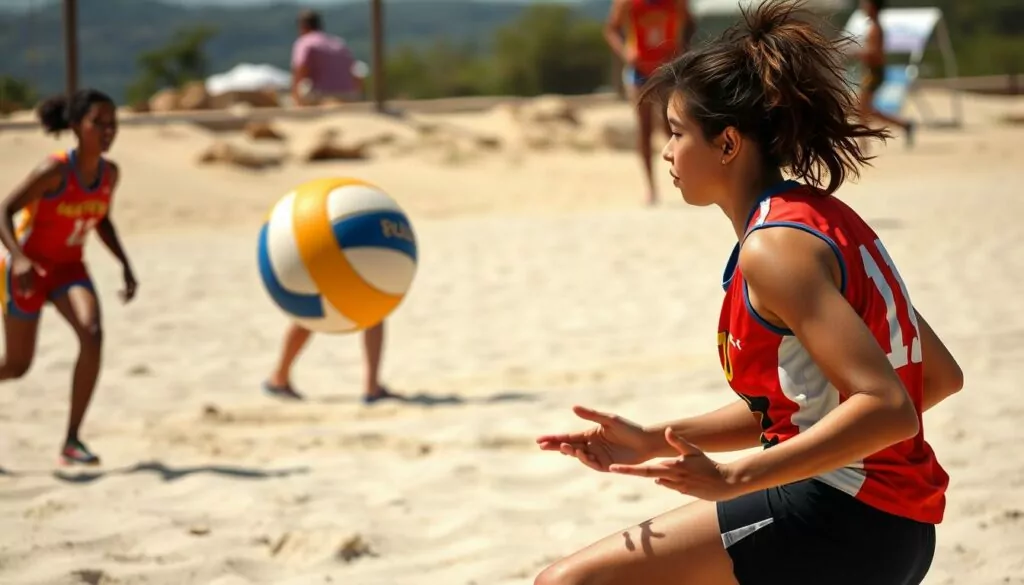I remember the thrill of my first spike on the volleyball. The satisfying thud of the ball on my hand, the rush of adrenaline when it flew across into the net. Then the explosion in cheers and clapping from the other players. This moment ignited my love for the game and set me on the path to master the latest techniques in volleyball.
As I progressed on my journey to become a volleyball player I realized that success is the result of constant advancement. Learning advanced techniques for volleyball isn’t only about being good on the field. it’s about taking the game of yours to higher levels and becoming an indispensable player for your team.
Through years of training and commitment, I’ve discovered that the drills for conditioning are a key element in getting the physical preparation for playing at the highest level. These exercises not only help increase endurance and strength but also improve the reflexes and agility required to execute complex moves with the utmost precision.
In this article I’ll provide the top knowledge and tricks I’ve learned during my journey. You may be looking to improve your serve, increase your defensive abilities or increase team co-ordination, you’ll discover the secrets to unlocking your potential on the court of volleyball.
Key Takeaways
- Learning advanced techniques can significantly enhance overall performance
- Continuous improvement is essential for high-level volleyball
- Volleyball conditioning exercises increase physical readiness for playing at a higher level
- The best tips from experts can aid players of all levels improve their game
- Consistent practice and dedication are vital to mastering advanced skills.
Mastering Serving Techniques

Serving is a crucial skill in volleyball. I’ve found that mastering different types of serves can give your team a significant edge. Let’s explore some key serving techniques and strategies to elevate your game.
Understanding Types of Serves
There are several types of serves in volleyball. The floater serve moves unpredictably through the air, making it hard for opponents to receive. The topspin serve, often used in jump serving, drops quickly due to its forward rotation. I’ve seen many players struggle with the jump serve at first, but with practice, it becomes a powerful weapon.
Tips for Improving Serve Accuracy
To boost your serve accuracy, focus on these key points:
- Maintain a consistent toss
- Keep your arm straight during contact
- Follow through towards your target
- Practice serving to specific zones on the court
The Importance of Serve Strategy
Developing effective serving strategies can significantly impact the game’s outcome. I always recommend targeting the weakest receiver or aiming for gaps between players. Mixing up your serves keeps the opposing team guessing and can disrupt their offense before it begins.
| Serve Type | Best Used For | Key Advantage |
|---|---|---|
| Floater | Inexperienced receivers | Unpredictable movement |
| Topspin | Deep court placement | Fast drop over the net |
| Jump Serve | Aggressive scoring | High power and speed |
By mastering these serving techniques and strategies, you’ll become a more versatile and valuable player on the court. Remember, consistent practice is key to perfecting your serve.
Elevating Your Defensive Skills

Defensive skills are the backbone of any successful volleyball team. I’ve found that mastering these skills can turn the tide of a game. Let’s dive into some key areas that will help you become a defensive powerhouse on the court.
Keys to Reading Opponents’ Hits
Reading an opponent’s hit is crucial for effective defensive positioning. I focus on the hitter’s approach, arm swing, and body positioning to anticipate where the ball might go. This split-second analysis helps me react faster and cover more court.
Techniques for Effective Digging
Digging is all about keeping the ball off the floor. I’ve learned to stay low, keep my arms straight, and move my feet quickly. These techniques allow me to get under hard-driven balls and pop them up for my teammates.
Blocking: Timing and Positioning
Blocking techniques are essential for a solid defense. I work on my timing by watching the setter and jumping at the right moment. Proper defensive positioning at the net involves aligning my hands with the hitter’s approach angle to create an effective block.
- Stay low and ready to move
- Keep eyes on the ball and hitter
- Communicate with teammates
- Practice quick lateral movements
By honing these defensive skills, I’ve significantly improved my game. Remember, great defense isn’t just about individual talent—it’s about working together as a team to cover the court effectively.
Enhancing Team Coordination
Team coordination is key to winning volleyball matches. I’ve seen firsthand how a well-coordinated team can outperform even the most skilled individual players. Let’s dive into some ways to boost your team’s synergy on the court.
Communication: The Foundation of Success
Clear communication is vital in volleyball. I always tell my players to call out every play. This helps prevent confusion and mishaps. Effective setting strategies often hinge on quick, clear signals between setters and hitters.
Drills to Improve Sync and Flow
Practice makes perfect when it comes to team coordination. I love using drills that focus on rapid transitions and quick decision-making. These exercises help players anticipate each other’s moves, leading to smoother offensive tactics during matches.
Strategies for Seamless Transitions
Smooth transitions between offense and defense can make or break a game. I teach my teams to stay light on their feet and ready to switch roles at a moment’s notice. This adaptability is crucial for executing complex setting strategies and maintaining offensive pressure.
